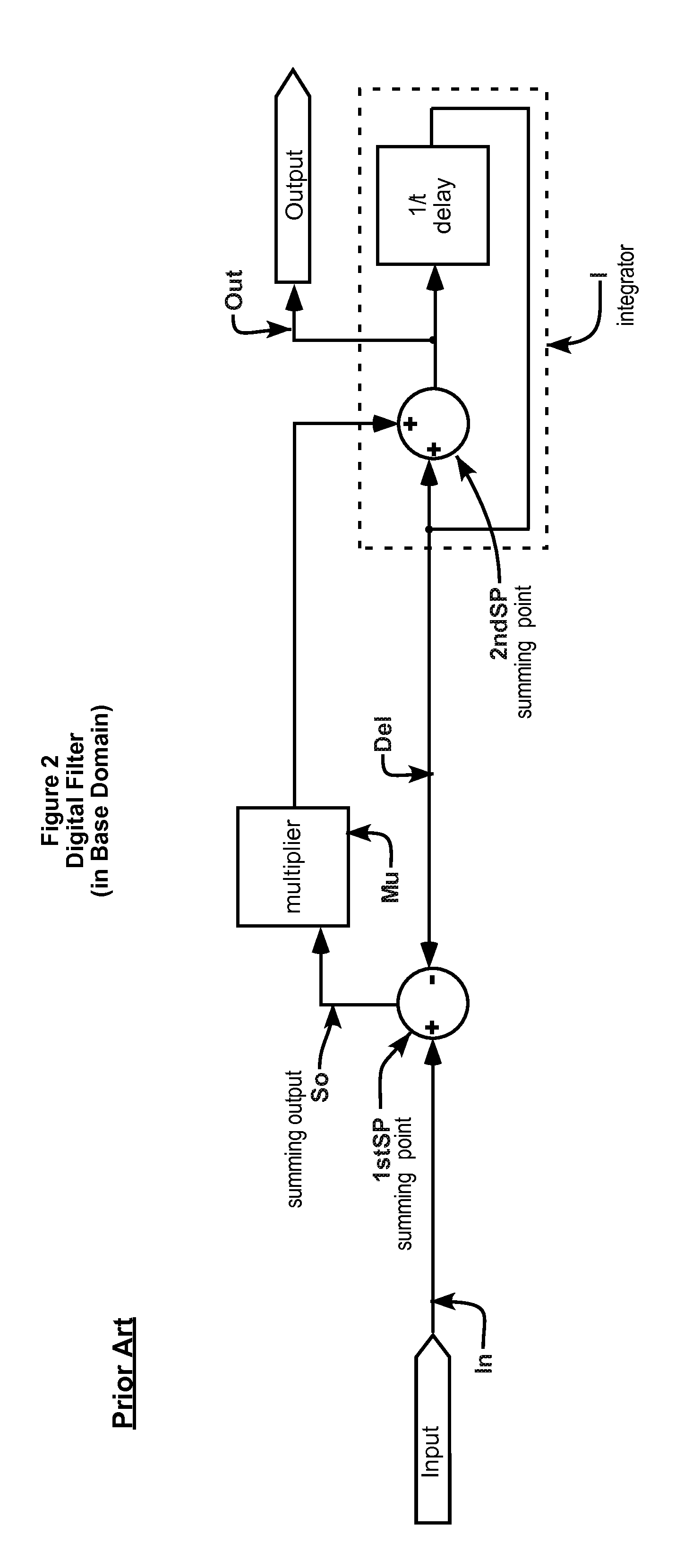Variable exponent averaging detector and dynamic range controller
a detector and variable exponent technology, applied in the direction of digital/coded signal control, instruments, computation using denominational number representation, etc., can solve the problems of poor separation of static and dynamic control, limited method to control the dynamic response of automatic gain control (“agc”), and little or no artistic ability, so as to improve the determination of average signal level
- Summary
- Abstract
- Description
- Claims
- Application Information
AI Technical Summary
Benefits of technology
Problems solved by technology
Method used
Image
Examples
Embodiment Construction
[0051]The Variable Exponent Averaging (“VEA”) Detector and Variable Exponent Averaging Dynamic Range Controller (“VEA DRC”) of the invention provide a means of separating control over DC, static, and dynamic action of a dynamic range controller. A “VEA Processor” has one or more VEA Detectors, and optionally includes a Control Processor. A VEA Processor always has at least one VEA Detector. If a VEA Processor has two or more VEA Detectors or Detector subsystems, then it may also have a Control Processor to prioritize or otherwise integrate or select the outputs of the two or more VEA Detectors and Detector subsystems. A VEA Processor controls a digitally controlled amplifier (“DCA”) or other digital processor (e.g., comparator, pattern discriminator, etc.). The combination of a VEA Processor and a DCA is a VEA DRC. For ease of reference, the combination of a VEA Processor and other digital processor to which a VEA Processor provides a Control Value is also called a VEA DRC, although...
PUM
 Login to View More
Login to View More Abstract
Description
Claims
Application Information
 Login to View More
Login to View More - R&D
- Intellectual Property
- Life Sciences
- Materials
- Tech Scout
- Unparalleled Data Quality
- Higher Quality Content
- 60% Fewer Hallucinations
Browse by: Latest US Patents, China's latest patents, Technical Efficacy Thesaurus, Application Domain, Technology Topic, Popular Technical Reports.
© 2025 PatSnap. All rights reserved.Legal|Privacy policy|Modern Slavery Act Transparency Statement|Sitemap|About US| Contact US: help@patsnap.com



